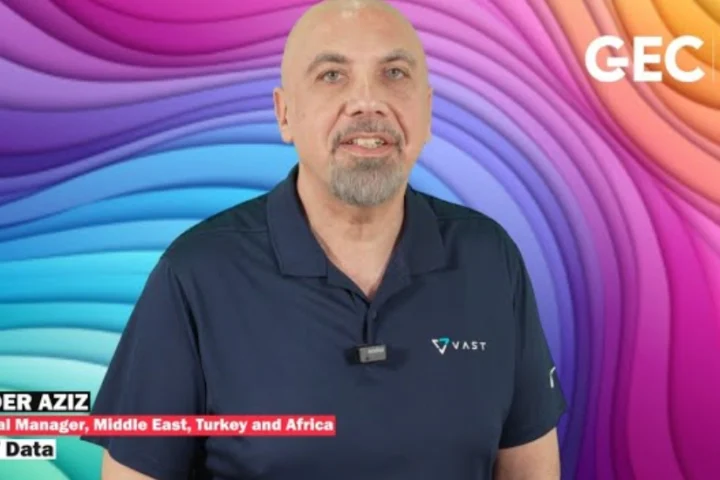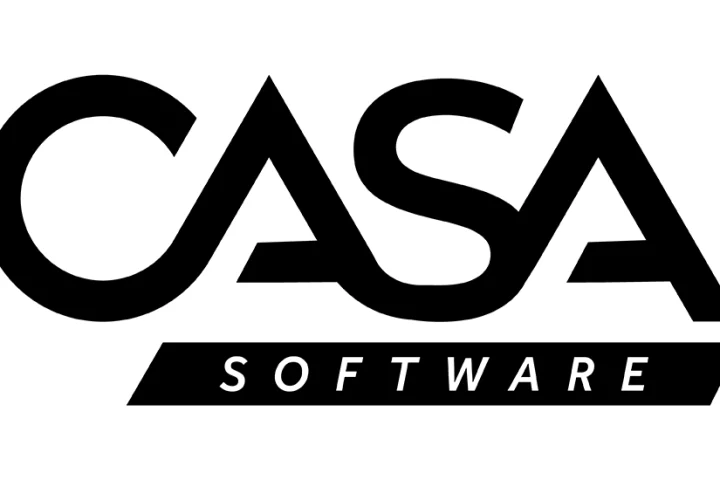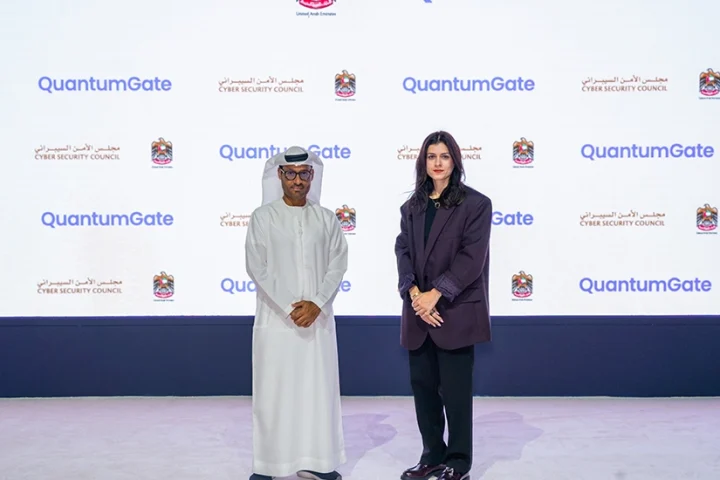Jeff Denworth, Co-Founder of VAST Data, shares how their newly launched AI Operating System is redefining enterprise infrastructure by enabling real-time, intelligent agents at massive scale.
Give us a big-picture view of what VAST Data is launching with the AI Operating System?
Vast Data isn’t new—we’ve been around since early 2016. What we’ve been steadily building is a unified software platform for the future of AI computing. It’s taken years of innovation, evolving through various stages. Today, Vast is a major player in AI infrastructure, with over $2 billion in software sold to customers managing massive data and database workloads.
At our core, we’re focused on creating a platform that handles unstructured data—video, images, text—at scale. That led to the development of our Vast Data Engine, a system that combines high-performance storage, classical and vector indexing, and a serverless compute environment tailored for AI pipelines.
Think of it as an operating system—but for the AI era. It’s designed to manage trillions of AI agents across millions of GPUs in real time, using structured and unstructured data. This isn’t just storage or a database—it’s a unified environment where you can run your AI apps, containers, and functions efficiently and securely.
We recently launched two core capabilities:
- Insight Engine, which uses AI models to give context to unstructured data (like video and text), enabling RAG-style search and reasoning.
- Agent Engine, which uses that enriched data to deploy AI agents across an organization’s private infrastructure.
We’re not a SaaS company. Vast provides software that customers deploy in their own environments. And now, with Vast DataSpace, these environments can stretch across multiple data centers, forming a global fabric for AI infrastructure.
We’re building and open-sourcing a suite of agents for practical enterprise tasks—like a video summarization agent, a trading analysis bot, or even an AI compliance assistant. One example we showcased was a sales strategy agent that can analyze internal CRM data and generate personalized playbooks, scripts, and action plans for sales teams.
Our architecture is fundamentally different. It’s designed for real-time performance at massive scale. You can write and read data at lightning speed, run parallel queries, and everything responds in milliseconds—even at global scale. That’s never been done before for live, active data systems.
We believe the future of AI is real-time, agentic, and decentralized.
What makes the VAST AI OS uniquely suited to enable persistent, memory-rich, real-time agents? How does it differ from traditional infrastructure solutions supporting AI workloads today?
Most existing AI infrastructure wasn’t built for the AI era. It’s fragmented, inefficient, and requires stitching together dozens of services to build even a simple pipeline.
VAST takes a radically different approach. We’ve built a unified software stack—data storage, database services, and geo-distributed compute—all in a single product. It’s not just a portfolio of tools; it’s one coherent AI operating system.
Think of it like turning on a smartphone: you don’t want to install 17 apps before using it. With VAST, it just works—at scale. We eliminate the complexity by offering a platform where everything from storage to AI deployment happens seamlessly and instantly.
can you define “agentic computing” in practical terms and explain why it matters now? How do you envision it being adopted across industries like healthcare, finance, or manufacturing?
Agentic computing is about giving AI the ability to reason in real time—not just respond. These aren’t static models—they’re intelligent agents that interact with data, make decisions, and adapt.
For example:
- In healthcare, agents can assist in diagnostics or discover drug compounds by understanding biological data and recommending molecular structures.
- In finance, banks use agents for tasks like fraud detection—analyzing documents, identifying anomalies, and flagging risks in real time.
- In manufacturing and smart cities, agents monitor video feeds, alert authorities, and help optimize traffic or safety protocols.
We’re already working with global banks, healthcare providers, and governments using these agents to automate complex processes, make faster decisions, and unlock real operational value.
What are the biggest limitations of today’s AI infrastructure that VAST is solving with a full-stack rethink? Why must companies look beyond just upgrading compute or storage individually?
The biggest challenges are complexity and efficiency.
Today, most AI infrastructure is a patchwork of dozens of separate tools. To build what VAST offers in one platform, companies typically need to integrate 10–30 different technologies—each adding friction, cost, and risk. VAST simplifies this by combining everything into one unified software stack that spans edge to cloud.
The second challenge is efficiency. Unlike legacy systems, VAST was built in the era of AI—with a brand-new architecture designed to maximize the value of high-cost compute like GPUs. We help customers significantly reduce storage costs and operational overhead, while getting more out of their infrastructure.
By simplifying deployment and improving performance, VAST brings AI within reach for more organizations—cutting down the time, cost, and complexity it typically takes to scale intelligent systems.
How does the VAST AI OS support intelligent enterprise operations — especially for organizations still dependent on legacy systems? Can you share any examples or case studies where this bridging is already happening?
Many enterprises are still operating in a hybrid world—where legacy systems handle core transactions, while newer AI-driven platforms handle analysis, decision-making, or automation. The VAST AI Operating System is designed as a unifying layer that brings structure, speed, and simplicity to these environments.
At its core, the OS eliminates infrastructure sprawl by consolidating storage, compute, database, and AI runtime into a single scalable platform. We support standard enterprise protocols like, NFS, SMB, S3, SQL, and Kafka, and integrate seamlessly with Kubernetes and Python, making it easy to extend existing systems without a total rip-and-replace.
Two examples from the past week: one a major financial organization, and the other a global life sciences leader are already leveraging the VAST AI OS to build secure RAG pipelines and deploy AI agents that augment analysts and researchers. In both these cases, legacy storage and databases remain intact, but all real-time intelligence work runs through the VAST platform, enabling a gradual but powerful transition to agentic computing.
What are the key orchestration and security challenges when deploying reasoning agents in real-world environments — and how does your stack address them?
The moment you introduce autonomous agents into business-critical workflows, three things become non-negotiable: observability, fault tolerance, and data-level security.
The VAST AgentEngine was built with these realities in mind. It provides distributed scheduling, fine-grained access controls, and native tracing for end-to-end observability, even across massively scaled, multi-agent pipelines. Each agent can assume unique identities and roles, enabling persona-based access to data, tools, and models.
Additionally, our vector store and database services are tightly coupled with our underlying file system. This ensures that permissions and data changes are synchronized in real time. This prevents the classic issue where agents act on outdated or unauthorized information.
What role does long-term memory and persistent context play in enabling more capable and autonomous AI agents? How is VAST making this technically and operationally feasible?
Long-term memory is essential for any system expected to reason, learn, and improve over time. Without persistent context, agents are just stateless functions with short-term recall.
With InsightEngine and AgentEngine, we’ve created a unified environment where context lives alongside the data it describes. Our real-time vector embedding system continuously ingests and indexes data changes, so agents always have access to the freshest, most relevant context at scale.
More importantly, our native data catalog and metadata infrastructure means agents can “remember” historical context, patterns, or outcomes, and use this to improve performance across time, users, and even use cases.
What are the most exciting or unexpected ways you see agentic computing transforming business workflows over the next 3–5 years?
The most exciting part is how fast agentic computing is moving beyond traditional automation into areas that demand reasoning, creativity, and adaptability.
For example, we’re seeing early adopters deploy agents that curate data lakes in real time, automate compliance enforcement, assist in scientific discovery, and even generate rich content in regulated environments. These aren’t simple task bots—they’re collaborators.
Over the next few years, we believe entire functions such as data engineering, legal discovery, customer support, and even parts of R&D, will be staffed by teams of AI agents that work 24/7, learn continuously, and operate with deep domain context.
How do you see VAST’s role evolving as enterprises move from experimental AI use to full-scale operational deployment?
We’re moving from proof-of-concept AI to AI as the engine of decision-making, automation, and differentiation. That shift requires a rethink of the entire stack—not just more GPUs.
Our role is to provide the operating system that abstracts this complexity and enables organizations to scale safely, efficiently, and intelligently. We help businesses go from ‘playing with AI’ to operating AI, across edge, core, and cloud.
As that evolution accelerates, we see VAST becoming a foundational layer, much like what Linux was for distributed computing or iOS was for mobile. Only this time, the OS is for reasoning machines.
What’s one major misconception you often hear about scaling AI infrastructure — and how would you correct it?
The biggest misconception is that scaling AI just means throwing more GPUs at the problem. In reality, the bottleneck isn’t compute—it’s data.
The challenge is delivering the right data, with the right context, to the right agents or models, in real time. Legacy architectures weren’t built for that. Partitioning, batch processing, and east-west traffic create fragility and delay.
With DASE, we eliminated those constraints. We built the world’s first truly parallel architecture. So now, millions of processors can compute, read, and write concurrently without stepping on each other. That’s what real scale looks like.
Looking back, what was a pivotal insight or decision that helped shape VAST’s approach to building the AI OS for agents?
In our first year, we didn’t write a line of code. We just studied. The pivotal insight was that the dominant architecture of the past two decades, shared-nothing, wasn’t going to cut it for real-time AI. Of course we didn’t know when AI was going to have its break out moment, but we knew it was coming.
That insight led us to invent DASE: a disaggregated, shared-everything architecture that could support massive concurrency, eliminate east-west bottlenecks, and store all data on a single high-performance tier.
From that foundation, everything followed. Real-time pipelines. Embedded vector search. Embedded agents. And a unified OS for intelligent machines. It was one of those rare moments where rethinking the architecture let us rethink the entire stack.
























